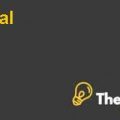Introduction
The investment bank that has been selected for this research paper is the Morgan Stanley (Ticker: MS) firm. A leading financial services firm provides investment banking, wealth management, and security and investment management services. The company has offices in more than 42 countries and more than 55,000 employees. The clients of the bank include governments, corporations, individuals and institutions(Reuters, 2017).
The Morgan Stanley world headquarters are located in New York City, the Asia Pacific headquarters are based in Tokyo and Hong Kong both and the European headquarters are based within London(Reuters, 2017). In this research paper, we attempt to perform a detailed financial analysis of Morgan Stanley and make specific recommendations to the potential investors and employees that want to be part of the investment bank.
A detailed ratio analysis would be performed with detailed evaluation and interpretation of the data. Along with this, we would also perform the valuation of the current stock of Morgan Stanley as trading on S&P 500 index. The research would be driven by two probing questions that ask:
Morgan Stanley Finance Research Paper Harvard Case Solution & Analysis
Would you invest your financial capital in Morgan Stanley as a shareholder?
Would you invest your human and intellectual capital in Morgan Stanley as an employee?
Analysis
We begin the financial statement analysis by performing a rigorous ratio analysis for the last four years from 2013-2016 for Morgan Stanley. We would be focusing on the key ratios to analyze the performance of the company and the returns that are being generated for the shareholders and the employees of the investment bank.
Ratio Analysis, Interpretation & Evaluation
A range of financial statement ratios have been computed for Morgan Stanley. These are discussed and evaluated below(Kumbirai, 2010):
Profitability
The profitability position of the bank is good if we look at the profit margin ratio of the company, then this ratio has been increasing, although the ratio is low at 14.54% in 2016 as compared to industry average of 15.65% but the difference is minimal. The return on asset ratio for the investment bank is low at 0.64% in 2016 as compared to industry average of 1.03% and it has been lower than 1% in the past 4 years. This is not a good about profitability of the company.
However, when we look at the return on equity ratio then we can see that management is generating good returns on the invested equity of the shareholders and providing them with adequate returns almost equal to industry average. The DuPont Measure also shows a similar ROE ratio for each year. The equity multiplier ratio of the bank is lower in all the years and it has declined in 2016. This shows that the company is not financing its major assets through equity(Halkos, 2004). Overall, the profitability position of the investment bank is good. The ratios are shown below:
Profitability Ratios 2013 2014 2015 2016
Profit Margin Ratio 6.96% 8.28% 14.83% 14.54%
Basic Earning Power 0.57% 0.43% 1.06% 1.12%
Return on Asset 0.30% 0.34% 0.65% 0.64%
Return on Equity 3.83% 4.30% 7.36% 6.70%
Equity Multiplier 12.57 12.63 11.30 10.47
DuPont Measure 3.83% 4.30% 7.36% 6.70%.................
This is just a sample partial work. Please place the order on the website to get your own originally done case solution.











